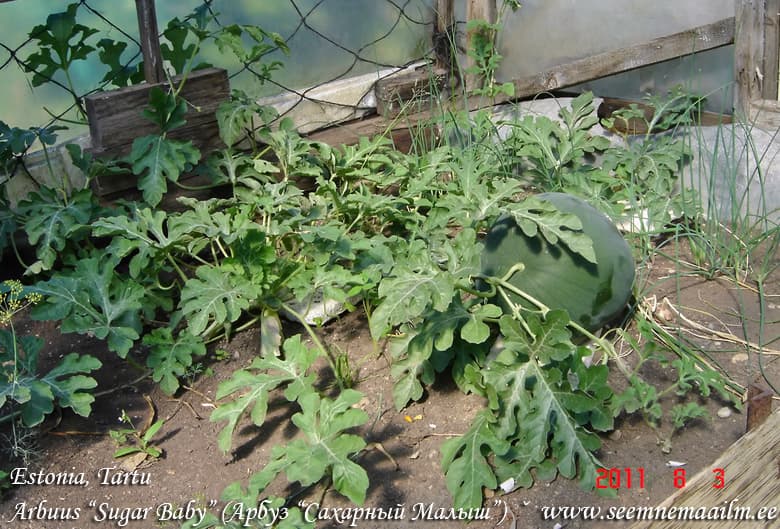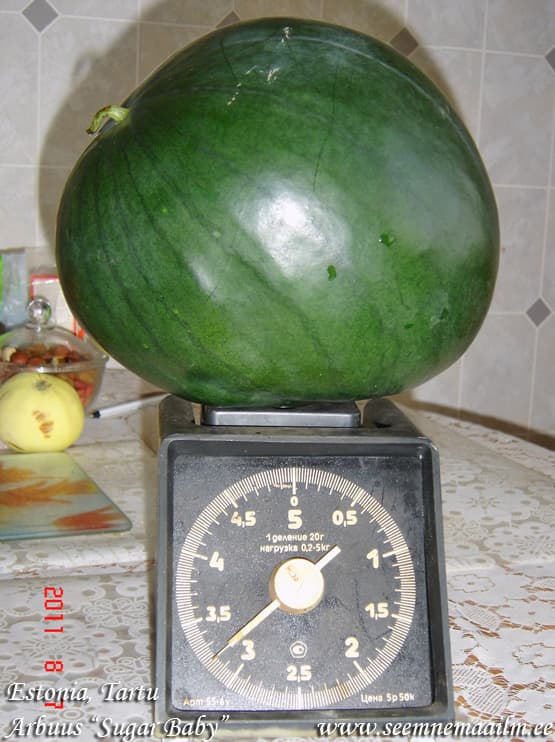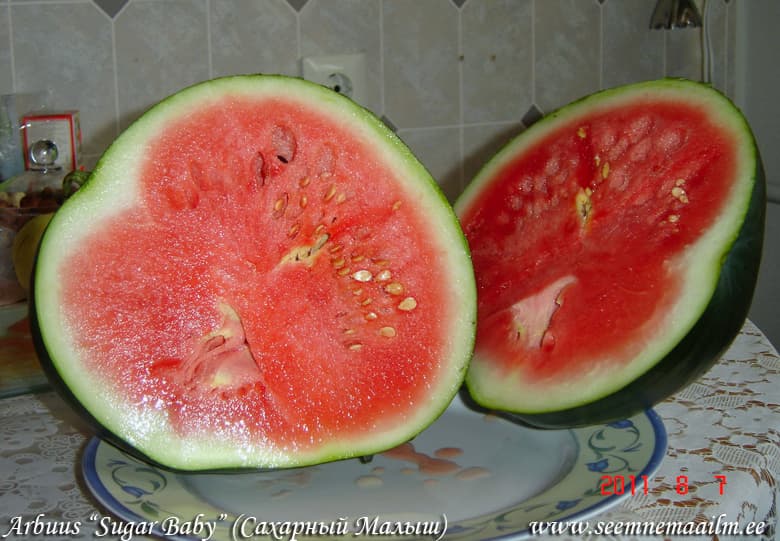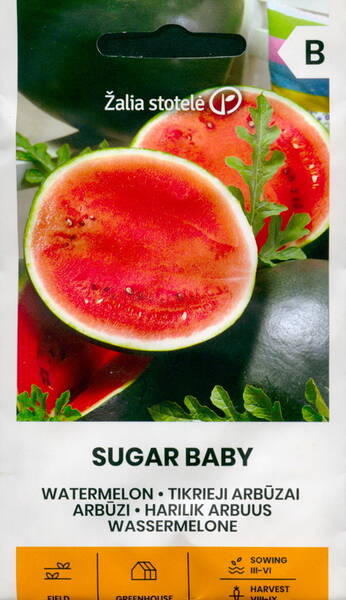The flesh of this watermelon variety is fine textured and very sweet. The vines are also shorter than big fruited watermelon vines which is ideal for those with limited space.
Developed with the home gardener in mind. This is open pollinated watermelon variety with sweet red flesh and a smooth, dark green shape.
Produces watermelons up to 4-6 kg in weight with an 20 cm diameter. 70 to 80 days to maturity. The pulp is attractively bright red, juicy, sweet and grainy.
The variety is resistant to diseases. The fruits are transportable and suitable for long-term storage.
1,0 g = 10-20 seeds.

Growing conditions.
Sowing for seedlings in light nutritious soil, a month before planting in the ground. The depth of seeding is 3-4 cm. At an optimal temperature of +25+30 °C, shoots appear in 10-14 days.
Planted in open ground when the threat of recurrent frosts has passed. Care consists of timely weeding, watering and fertilizing.
Sowing: April (2,3) - May (1).
Transplanting: June (1,2).
Harvest: August-September
Planting method: seedlings.
Distance between plants: 60 cm.
Distance between rows: 100 cm.

HARVESTING.
The last, no less important stage of growing watermelon and melon is harvesting the fruits. In no case should you rush to harvest, because even if the fruits have reached impressive sizes, they may not be ripe.
Crows love to eat ripe fruits, especially in hot and dry summers. Therefore, you should promptly install scarecrows on the melon and watermelon beds.
Determining the ripeness of melon fruits is relatively simple: they acquire a characteristic color and begin to exude the aroma of a ripe melon.
Determining the ripeness of watermelon fruits is much more difficult, especially for an inexperienced person. You need to focus on the following signs: the pattern of the bark becomes clearer and brighter, the wax coating weakens, and the fruits make a dull sound when tapped.

Watermelon. Bot.: Citrullus lanatus L.












